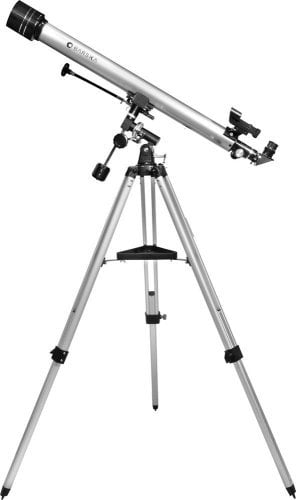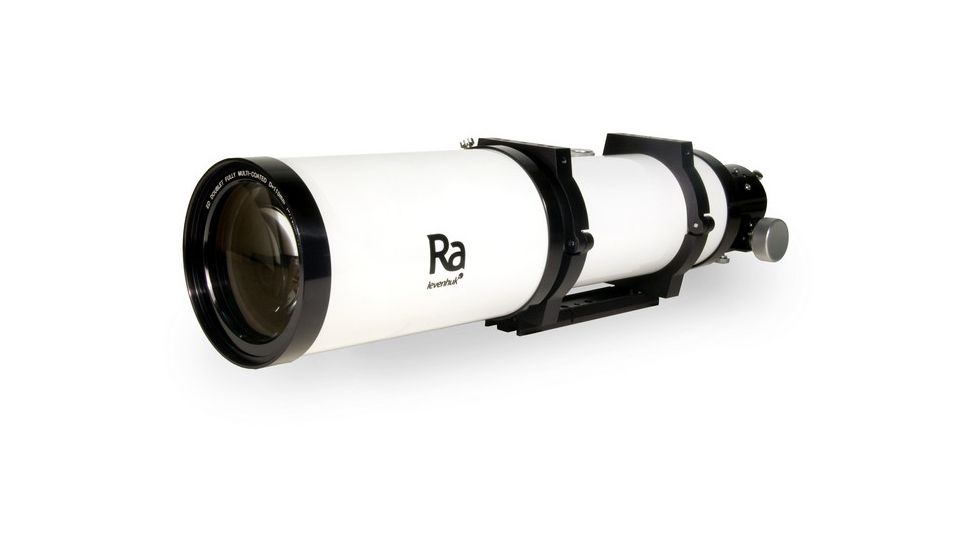

Objective lenses are responsible for refracting the light that enters the telescope and converging it into one main focal point.Īs a general rule of thumb, the bigger your object lens is, the more light can enter.

Objective lenses are typically the largest lens on the telescope. The main job of the objective lens is to gather and collect light. Let’s take a look at the different parts of a refracting telescope. Parts of the Refracting TelescopeĮven though refracting telescopes look like complex machines, there are only a few basic parts that play essential roles. The focal length determines how much the telescope magnifies the image. The distance from the focal point to the lens is called the focal length. When light passes through a convex lens, it bends the light inwards.Īs the light bends inward, it collects and gathers to a single point called the focal point. The objective lens and eyepiece lens are both curved lenses, which are called convex lenses. This lens will make sure that the image is the right orientation and is not upside down. Some telescopes will also have a second smaller lens behind the eyepiece of the telescope. They also increase the clarity and brightness of the magnified image. These are two of the most important telescope components, which we will discuss in more detail later.Īs the light enters the telescope, these lenses refract, focus, and magnifies the light. Now that we know what refraction means let’s examine how this concept applies to the telescope.Ī refracting telescope has two main lenses called the eyepiece lens and the objective lens. Optical density refers to how easily something transfers through the substance. Light refracts whenever it passes through a translucent substance at an angle.įor light to refract, the substance needs to have a different optical density. Refraction refers to the phenomenon when light bends as it passes through one substance to another. Refraction of Lightīefore we get into how a refracting telescope works, let’s examine the concept behind the technology: refraction of light. Let’s take a look at the technology behind these optical instruments. If you are a beginner, it may be daunting trying to learn how a refractor telescope works.Įven though telescopes are complex machines, it doesn’t mean it is impossible to understand how they work. It is pretty simple to use and will not require a lot of adjusting once you set it up. Many beginners prefer to use a refractor telescope since there is not as steep of a learning curve compared to other types of telescopes. Whether you want a telescope for your backyard or even your bedroom, it will be easy to find a model. These instruments also come in a few different sizes. The average price range of a refracting telescope is around $500 to $1500, depending on the make and model.

They are quite low maintenance but are on the higher end of the price range. Refracting telescopes are one of the most common telescopes that you will find on the market.

Some terrestrial objects that you can see with refracting telescopes include the moon, double stars and planets such as Mars and Jupiter. Users will look through the eyepiece to see the final image that the telescope produces.Īstronomers use refracting telescopes to observe visible light wavelengths of the electromagnetic spectrum. Most refracting telescopes will consist of a long body tube, a finderscope, a mount or tripod, a lens near the front and an eyepiece near the back of the instrument. However, when Galileo Galilei heard of the failed invention, he attempted to create one himself.Ī year later, Galileo invented a refracting telescope of his own and used the instrument for astronomy. A man named Hans Lippershey attempted to create one but was unsuccessful. Historians have traced the first refracting telescope to the 17th century in the Netherlands. The instrument uses an objective lens to collect light to form an image. Most people use refracting telescopes for astronomy and observe planets or other terrestrial objects in the night sky. What Is a Refracting Telescope?Ī refracting telescope is a type of optical instrument that allows you to see faraway objects close up.
#Refracting telescope how to#
We will also explain the different parts of a refracting telescope and how to use one.īy the end of this guide, you will know everything you need to know about this model and will know if it is the right instrument for you. We will cover what a refracting telescope is and how it works. This guide will explain everything you need to know about refracting telescopes. Perhaps you are trying to decide what kind of telescope to use since there are three main kinds of telescopes on the market. If you are into astronomy, you may have heard of this instrument. How Does It Compare to Other Telescope TypesĪ refracting telescope is a type of optical instrument that allows you to view faraway objects close up.


 0 kommentar(er)
0 kommentar(er)
